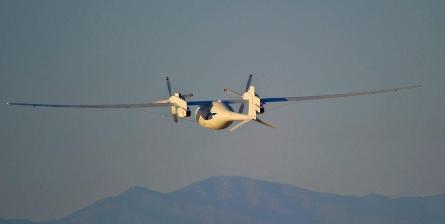The Boeing Phantom Eye, a high-altitude, long endurance test bed, will require a nose gear redesign after the component snapped during the aircraft's first landing at Edwards AFB, California.
"Hardware-wise, there will be changes based on what we learned," says programme manager Drew Mallow. "I anticipate very little changes to the main landing gear, but we will redesign the nose landing gear based on what we learned."
"The [main gear] skid came down on the lakebed and the vehicle slid for white a while," says Mallow, but "the nose gear was unable to take the load applied to it and actually the wheel snapped." The aircraft slid 200m (650ft) after the incident, and Boeing is continuing to evaluate the airframe and systems for damage.
The 4 June flight of the liquid hydrogen-powered unmanned aircraft system otherwise was uneventful over its 26min duration.
"During the flight portion itself we actually had no unexpected events," says Mallow. "That means every system operated nominally during the entire flight."
 |
|---|
| ©Boeing |
The aircraft was brought back to the hangar and disassembled for inspection and pre-planned modifications, including changes to the oil pump and electrical system. There is no schedule for putting the aircraft back into the air, but Mallow anticipates reaching the aircraft's main goal, cruising at 65,000ft, in with as few as two additional flights.
Boeing is in discussions with several potential customers to use the aircraft after test flights are finished, said to include domestic and foreign entities interested in putting different payloads on the aircraft. The company repeatedly declined to identify the organisations and mission payloads.
While Phantom Eye is a one-off test bed, programme officials expressed satisfaction with the propulsion technology for a much larger version of the aircraft, should customer interest prove sufficient.
Source: Flight International



















